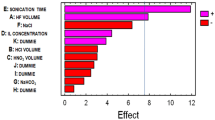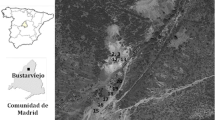Abstract
Chemical sequential extraction for metal fractionation in sewage sludge using the Tessier method has been accelerated by ultrasound. The two sequential extraction schemes (conventional and ultrasound accelerated) were compared in terms of extraction efficiency, precision, treatment time and partitioning patterns of metals. Extractable contents of Cu, Cr, Ni, Pb and Zn were measured by flame atomic absorption spectrometry, and the analytical results obtained by the two procedures were statistically compared (P = 0.95). No significant differences were found in the two first fractions (i.e. exchangeable and carbonate-bound), however, in the third and fourth extracts (i.e. Fe-Mn oxides-bound and organic matter-bound) the extraction capability of the two methods differed significantly.
Similar content being viewed by others
Author information
Authors and Affiliations
Additional information
Received: 15 June 1998 / Revised: 10 November 1998 / Accepted: 11 November 1998
Rights and permissions
About this article
Cite this article
Pérez-Cid, B., Lavilla, I. & Bendicho, C. Comparison between conventional and ultrasound accelerated Tessier sequential extraction schemes for metal fractionation in sewage sludge. Fresenius J Anal Chem 363, 667–672 (1999). https://doi.org/10.1007/s002160051269
Issue Date:
DOI: https://doi.org/10.1007/s002160051269




